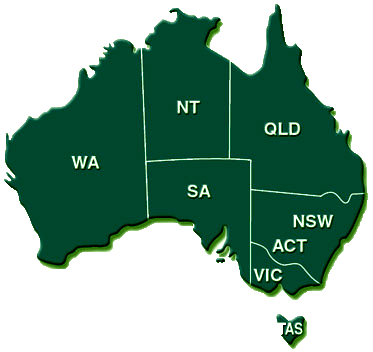19 Jan 2024
The Defence Strategic Review went a long way to articulating the long-term objectives and capability priorities of the Australian Defence Force in the era of great power competition, but in light of recent developments and the rapidly shifting sands, do we need to really think about what we need to be capable of, particularly in the aftermath of a Taiwan crisis?

It is the conflict that has the potential to ignite a third world war at the most extreme end or rewrite the global and regional balance of power at the most benign end, accordingly, planning for the potential fallout of a Taiwan crisis must increasingly take priority.
Either of these outcomes only becomes more impactful when combined with the rapid degradation of the post-Second World War economic, political and strategic order that we are now witnessing across the globe – from the waters of the Red Sea to the steppes of Ukraine, the jungles of Venezuela and Guyana or the deserts of Pakistan and Iran.
It is true that Australia isn’t alone in facing these challenges, however, the nation’s dependence upon a world order now under direct assault leaves us increasingly vulnerable in the face of this emerging global and regional paradigm.
As the guardians of Australia’s national interests, security and prosperity, the Albanese government’s Defence Strategic Review (DSR), with an emphasis on “National Defence”, identified the key capability objectives for the Australian Defence Force to develop in order to better respond to our increasingly dangerous world.
In particular, the emphasis on “National Defence”, defined by the DSR as a “unifying national strategic approach and a new approach to our nation’s defence” is the core of capability objectives and priorities articulated in the DSR.
This is further expanded to prioritise a number of initiatives in order to “deliver a more capable ADF”, including an enhanced and expanded alliance with the United States, including key force posture initiatives in Australia; a new, more focused approach to defence planning based on net assessment; a focus on deterrence through denial, including the ability to hold any adversary at risk; a new approach to force posture for the ADF and a whole-of-nation effort to develop strategic deterrence and resilience.
Yet in the nearly 12 months since the release of the Defence Strategic Review, the world and the Indo-Pacific have only become more contested, more unpredictable and challenging for Australia to navigate with little in the way of progress towards delivering the priorities articulated in said review.
Furthermore, the lessons currently being learned across the globe seem to be falling on deaf ears, as both the government and Australian public remain far removed from the direct threats to our way of life, peace, and prosperity emerging across the globe and closer to home.
Rather, it seems that government, policymakers, and the Australian public have been seduced by the promise of “Wunderwaffe” or wonder weapons, like our future fleet of nuclear-powered submarines, HIMARS or even the F-35 Joint Strike Fighter, despite its historic challenges as solving all problems we may face in the coming years and decades.
Force structure, mass and geographic focus critical to success
The government’s Defence Strategic Review is very clear in articulating the emphasis on shifting Australia’s Cold War-era emphasis from a “Balanced Force” to a “Focused Force”, best summarised by the review itself in its own competing definitions of both terms.
A “Balanced Force” defined as being “designed to be able to respond to a range of contingences when the strategic situation remains uncertain. This force design required that the ADF respond to low-level threats related to continental defence, regional operations in support of Australian interests and global support to our alliance partner, the United States,” compared to the review’s definition of a “Focused Force” as a “conceptual approach to force structure planning will lead to a force designed to address the nation’s most significant military risks”.
Building on this, the review recognises that the existing force structure and posture of the Australian Defence Force is “not fit for purpose” in the current threat environment, rather emphasising “Defence infrastructure, the five domains, and enabling logistics and other systems – the Integrated Force – must be focused on achieving the critical capabilities”, particularly when measured against the increasingly rapid deterioration of “the strategic circumstances and limited resource base we face, investing in the critical capabilities will require divesting, delaying, or re-scoping other activities that do not advance the attributes of the Integrated Force”.
Despite this, we are yet to see any formal proposal for a force structure. While it is fair to say that we may still see a more complete Force Structure Plan once the government has formally released its response to the Independent Review of the Surface Fleet, the strategic environment hasn’t improved any, in fact, it has gotten worse.
Nevertheless, getting the force structure right is essential and we need to ensure that we maximise the efficacy of the platforms being developed and delivered and the capability outcomes, by more clearly defining the role and expectations of Australia’s armed forces in this new era of great power competition.
Equally, we have seen continued concerns about the recruitment and retention of defence personnel and the impact of declining personnel numbers despite a bipartisan commitment announced under the previous government to expand the ADF’s “workforce” to approximately 80,000 personnel by 2040.
This albeit marginal proposed growth comes at a time when allies are relearning the importance of mass in the modern context, with British Chief of the General Staff (CGS), General Sir Patrick Sanders, stating, “Ukraine has reminded us that success can only be achieved with a secure land industrial base together with the stockpiles to sustain the fight. That mass is still indispensable. That we need to plan to reinforce and regenerate the force, for to only focus on the first echelon – i.e. those troops that we will put into battle at the start of a war – is to prepare for failure.”
Reinforcing this is Andrew Michta of the US-based Atlantic Council think tank, who stated, “The overarching lesson from the unfolding war in Ukraine is simply the scale of what’s required to fight a modern state-on-state war. No Western military has prepared for such levels of weapons and munitions consumption and force attrition. No NATO ally today – save for the United States – has the armour or munitions stocks that could last longer than a few weeks or months at best on Ukraine-like battlefields.
“This war has brought front and centre the enduring centrality of mass in modern conventional warfare with a near-peer adversary. It should also put paid to the obsession with precision strikes that has dominated the US defence acquisition culture in recent years.”
Finally, rounding out the key factors to success is Australia’s geographic focus, which has, for the longest time, been focused on the path of least resistance, namely the South Pacific, because for Australian policymakers, it has been easier to be a big fish in a small pond than confront the uncomfortable reality that our area of geographic interest is FAR larger and FAR more complex requiring a nuanced and more significant Australian investment, making it a FAR harder sell to the already disengaged Australian public.
Rather by accepting that Australia’s geographic focus must extend from the east coast of Africa to the Yellow Sea in the north, and the waters of the South Pacific presents a realistic understanding of our primary area of responsibility and focus.
Bringing us back to the implications of a Taiwan conflict or crisis on Australia’s defence posture, planning, and capabilities.
In response, both Australia’s policymakers and public need to be more focused and committed to delivering the capabilities needed both in the immediate future and on the other side of any potential conflict over Taiwan, where Australia may face a radically different world, alone or at least with limited support from our “great and powerful friend”.
Action over rhetoric
There is no doubt that Australia’s position and responsibilities in the Indo-Pacific region will depend on the nation’s ability to sustain itself economically, strategically, and politically in the face of rising regional and global competition.
Importantly, in this era of renewed competition between autarchy and democracy, this is a conversation that needs to be had in the open with the Australian people, as ultimately, they will be called upon to help implement it, to consent to the direction, and to defend it should diplomacy fail.
As we grapple with these challenges, enhancing Australia’s capacity to act as an independent power, incorporating great power-style strategic economic, diplomatic, and military capability serves as a powerful symbol of Australia’s sovereignty and evolving responsibilities and commitment to supporting and enhancing the security and prosperity of Indo-Pacific Asia.
Equally, the Australian public needs to be educated on the challenges we face in our region and more broadly, the post-Second World War order upon which our wealth and stability is built, because without it, many Australians will blindly simply go with the flow and watch as we fade into the pages of history.
Dr Ross Babbage of US think tank Center for Strategic and Budgetary Assessments reinforces this, saying, “I think what we’ve got to show, what’s the vision for Australia, you know, what can we achieve and what, you know, if we go on the trajectory we are on at the moment. I’ll tell you what, you know, a lot of people, a lot more people in a decade’s time are likely to be either in really dumb jobs or maybe not have jobs at all, and in the society, be a lot weaker and will be a lot less prosperous.
“So what we want to say is, look, there’s plenty of scope for doing more and smarter things, encouraging investment to do that, and then there will be some very, very interesting additional jobs and opportunities, a lot of high tech, and so on, I can tell you that, you know, talking to foreign investors, they’re quite keen on principle to work here, and do a lot more here and provide a lot more good jobs for Australians.”
Expanding and enhancing the opportunities available to Australians while building critical economic resilience, and as a result, deterrence to economic coercion, should be the core focus of the government because only when our economy is strong can we ensure that we can deter aggression towards the nation or our interests.
This also requires a greater degree of transparency and a culture of collaboration between the nation’s strategic policymakers, elected officials, and the constituents they represent and serve – equally, this approach will need to entice the Australian public to once again invest in and believe in the future direction of the nation.
Additionally, Australia will need to have an honest conversation about how we view ourselves and what our own ambitions are. Is it reasonable for Australia to position itself as a “middle” or “regional” power in this rapidly evolving geopolitical environment? Equally, if we are going to brand ourselves as such, shouldn’t we aim for the top tier to ensure we get the best deal for ourselves and our future generations?
If we are going to emerge as a prosperous, secure, and free nation in the new era of great power competition, it is clear we will need to break the shackles of short-termism and begin to think far more long term, to the benefit of current and future generations of Australians.
Get involved with the discussion and let us know your thoughts on Australia’s future role and position in the Indo-Pacific region and what you would like to see from Australia’s political leaders in terms of partisan and bipartisan agenda setting in the comments section below, or get in touch at [email protected] or at [email protected].



